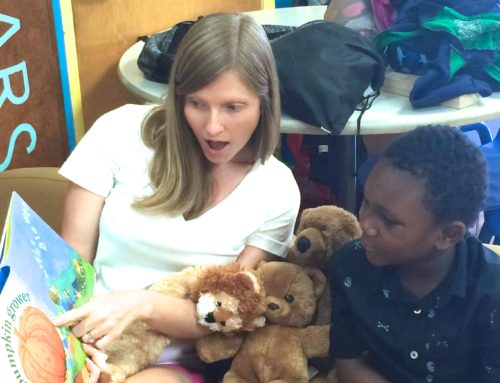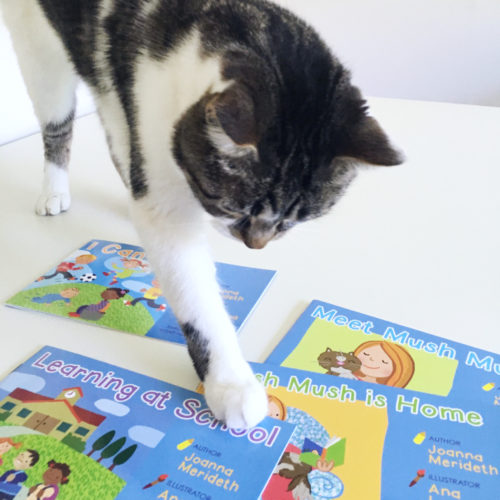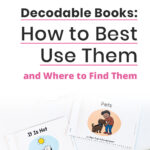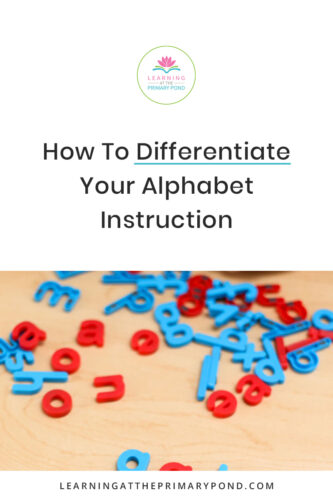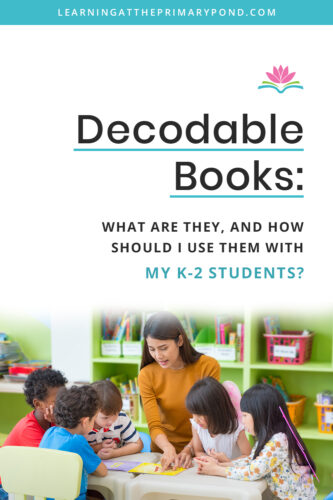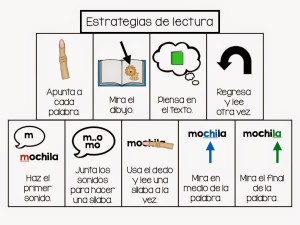If you teach Kindergarten or first grade, you probably spend time working with students who are pre-readers – who can’t yet read traditionally.
We spend a lot of time teaching letter sounds, simple sight words, and basic skills to those kiddos. All of this is good, but they also need to have experiences reading real texts!
And I don’t know about you, but every year I’ve taught or co-taught Kindergarten, I’ve run out of books for those pre-readers who get “stuck” at Level A or below. There never seem to be enough!
So when teacher and author Joanna Meredith shared her Mush Mush Readers series with me, I was beyond excited! This set of books is perfect for pre-readers or beginning readers who need to work on print concepts and beginning sight words. And if you’re wondering about the name (like I was!), Mush Mush is her cat who stars in the book. 🙂
Joanna has taught Pre-K and Kindergarten for six years, and she developed these books because she had the same problem as I did. She just wasn’t finding enough appropriate books for pre- and beginning readers.
Like me, Joanna believes that developing reading confidence our little learners is key for long-term reading success. So in today’s post (written by Joanna), she shares with us some tips and fun activities for working with pre- and beginning readers!
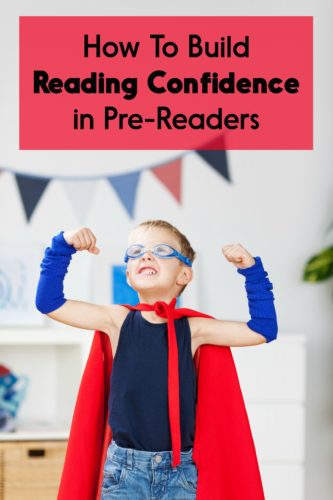
Photo Credit: Racorn, Shutterstock
Joanna says…
“I was relieved when I read Alison’s blog post, “What To Do When ‘Level A’ Readers Are Too Hard,” because it confirmed that I wasn’t alone in tackling this problem!!! Whether it was for small group, independent, or ‘at-home’ reading, I witnessed that all the ‘Level A’ or ‘Level 1’ readers were too difficult for my little learners just beginning their reading journey.
So why do I think ‘Level A’ and ‘Level 1’ Readers are too difficult for beginning readers? Well, they demand that beginning readers know many of their alphabet letter names and sounds, how to blend CVC and CVCe words, have a sense of 1-1 correspondence, read sight words (pre-primer up to 2nd grade!), and understand sentence structure. Not to mention demanding that they master basic print concepts. Learning all of these reading concepts at once is overwhelming and can be crippling when children’s reading confidence is already in a vulnerable state. It’s just too much!
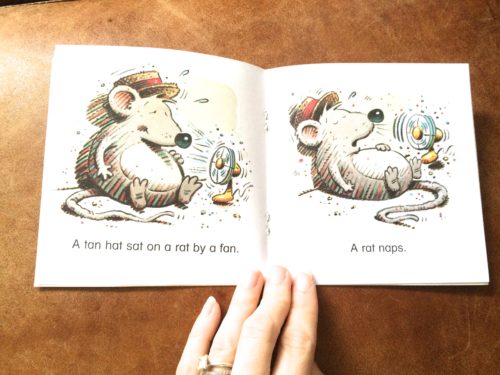
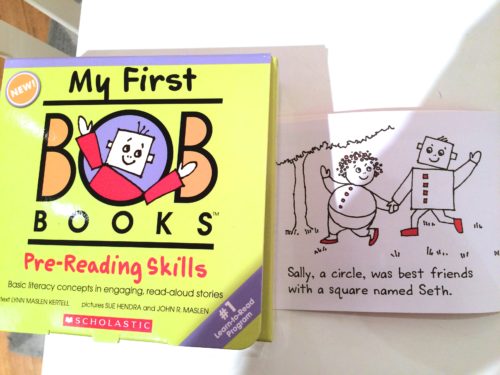
So what can you do to build reading confidence so your beginning readers are motivated and excited to learn to read? I am excited to share 12 small group activities below that do just that:
- Enjoy small group every day! Make time in your reading block to meet with your small groups every day. That’s right – Monday-Friday! Building a secure, predictable learning environment is huge for beginning readers. They will build more trust in you and themselves if they meet with you every day. In my classroom, I used the following 6 ‘Reading Stations,’ which each lasted 5-7 minutes: Alphabet, Sight Words, Listening Center, Computer, Teacher Time, & Read to Self (Read to Self was normally an extension of what we talked about during ‘Teacher Time’)
- Read to them! Do not start your ‘Beginning Leveled Small Groups’ by giving them a decodable book. Simply READ TO THEM. I Re-Read a ‘Read-Aloud Book’ in small group 2-3 times to help build fluency. Model and discuss basic concepts of print (i.e., location of the front and back cover, how to turn the pages, words vs. illustrations, etc.), roles of the author and illustrator, characters and setting, and discuss any conflict that arises and the solution that is found at the end of the book.
- Get to know their interests! In the beginning weeks, ask them what animals, activities, and things they enjoy. Then, gather up books that include those topics, share them in small group and leave them in your classroom library! This will help foster a warm, fuzzy feeling inside them when it is ‘reading time’ because they will be interested and feel connected. A child who does not enjoy reading will not be motivated or have the desire to take the necessary steps to read books on their own.
- Role play being the teacher! Let the student ‘teach’ a stuffed animal or puppet an alphabet letter or sight word they have mastered.
- Lights, camera, action! Video the student ‘echo reading’ a book with you and let them watch it back! They love watching themselves! You can also take a picture of them during the school day and use that picture in small group to create a story.
- Connect home & school! Let your beginning readers bring in a book they love reading at home to re-tell, or bring an item from home that begins with the letter you are studying to share during small group. Connecting home life and school life is a great confidence-booster because they feel that they have lots of ‘reading cheerleaders’.
- Mirror it! Give each student a hand-held mirror when they practice letter sounds. This helps them see that they are creating letter sounds by themselves and that there is learning going on. They also love looking at themselves. 🙂
- ‘Read’ illustrations! Discuss book illustrations during small group. In the beginning of the school year, I take picture walks and ‘read’ the illustrations but do not read the text. I brainstorm with the students what the words could be based on the illustrations. The kids love to take time to examine the illustrations and discuss their own thoughts.
- Get excited about sight words! Create weekly sight word lists for your beginning readers. I keep mine between 3-5 new sight words a week. When they master their weekly list, celebrate the victory!
- Strengthen 1-1 correspondence! Throughout the day you can strengthen this skill by having your beginning readers pass out one item per student (pencils, paper, name tags)! They love being the teacher’s helper. ☺
- Sound box! Have a special ‘sound box’ that includes 3-D objects that begin with the letter you are studying. The students enjoy practicing the letter sound while they hold and ‘play’ with the objects. It is also fun to make up silly alliteration stories with the sound objects in the box!
- Mush Mush Readers! With minimal teaching, these 10 early sight word readers give beginning readers an opportunity to read from actual books!
My desire is that ‘beginning readers’ grow to become confident readers and that they raise their reading trajectory over the course of the year without lagging behind.
This is why I wrote and published my 10 early sight word readers called, ‘Mush Mush Readers.’ Named after my fluffy, friendly cat, my books focus on sight words, 1-1 correspondence, ‘reading’ picture words, and sentence repetition to build fluency.
‘Mush Mush Readers’ are ACTUAL books that your beginning readers can hold in their hands to build their reading confidence! The book pages were printed thick to hold up against all of the ‘love’ and re-reading the little learners will do with them! Your beginning readers can build their reading confidence using my ‘Mush Mush Readers’ in 4- simple steps:
- Learn the sight word on the back cover
- Put their pointer finger on Mush Mush’s paw print below each word as they read
- Look at the illustration to ‘read’ the picture-word
- RE-READ!!!
The beginning of the school year is so precious and so delicate for your beginning readers. You play a vital role in their reading foundation – help make it a strong and confident journey!
Thank you so much, Alison, for letting me guest blog, and thank you, Learning at the Primary Pond readers, for letting me share with you! Come and visit Mush Mush and me on my blog, “Reading Tails!” www.mushmushreaders.com then click Reading Tails Blog!”
I hope you enjoyed Joanna’s ideas as much as I did! Her second bullet point about just reading aloud to kids during small group is my favorite. Yes, we can have them work in beginning readers, but reading aloud to and with them is so important (and it’s great to do in a small group).
Joanna also has a tip sheet for parents to share with you – you can download that for free by clicking HERE. Families often aren’t sure how to help their pre-readers, but these ideas give them a fantastic starting point!
I hope you’ll also consider purchasing her Mush Mush readers. They are absolutely adorable and will make an engaging addition to your home or classroom library! You can click HERE to read more about them. (My cat, Max, approves of them, too.) 😉
Happy teaching!

